Are you looking to add some greenery to your home? Bamboo is a great choice! Not only does it look beautiful, but it also adds life and texture to any room. Growing bamboo indoors requires much less maintenance than other houseplants, making it perfect for busy folks. Plus, there are plenty of varieties for you to choose from. Let’s take a look at nine indoor types of bamboo plants that you can easily grow in your home!
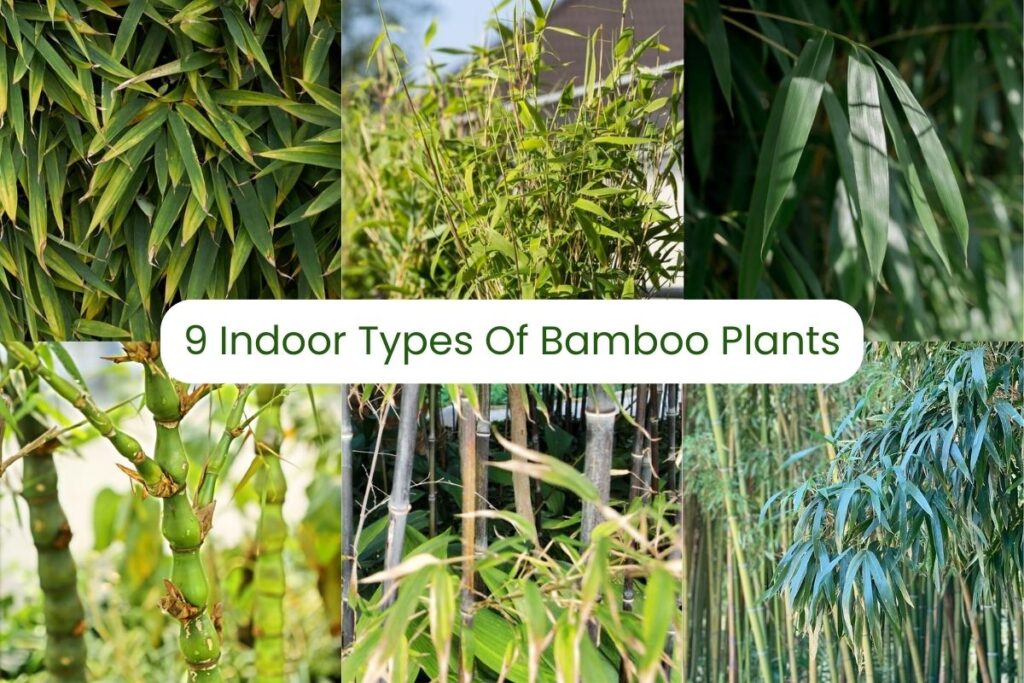
Contents
Can You Grow Bamboo Indoors?
Have you ever wondered if it’s possible to bring a bit of the outdoors inside? Well, you can with bamboo! It is possible to grow bamboo indoors and enjoy its beauty. Not only can you have a unique addition to your home decor, but there are several DIY bamboo projects that will make it look like an impressive work of art.
When caring for indoor bamboo plants, be sure to pot them correctly so they don’t become root bound. Keep an eye out for pests and use natural methods when necessary. Make sure not to overwater by following the soil moisture requirements of each type of plant. With some basic care and attention, your indoor bamboo plants will thrive and give you many years of pleasure.
9 Indoor Types Of Bamboo Plants
There are many indoor types of bamboo plants to choose from in the list below. Each type has its own characteristics that make it unique and perfect for any room in the home.
Lucky Bamboo
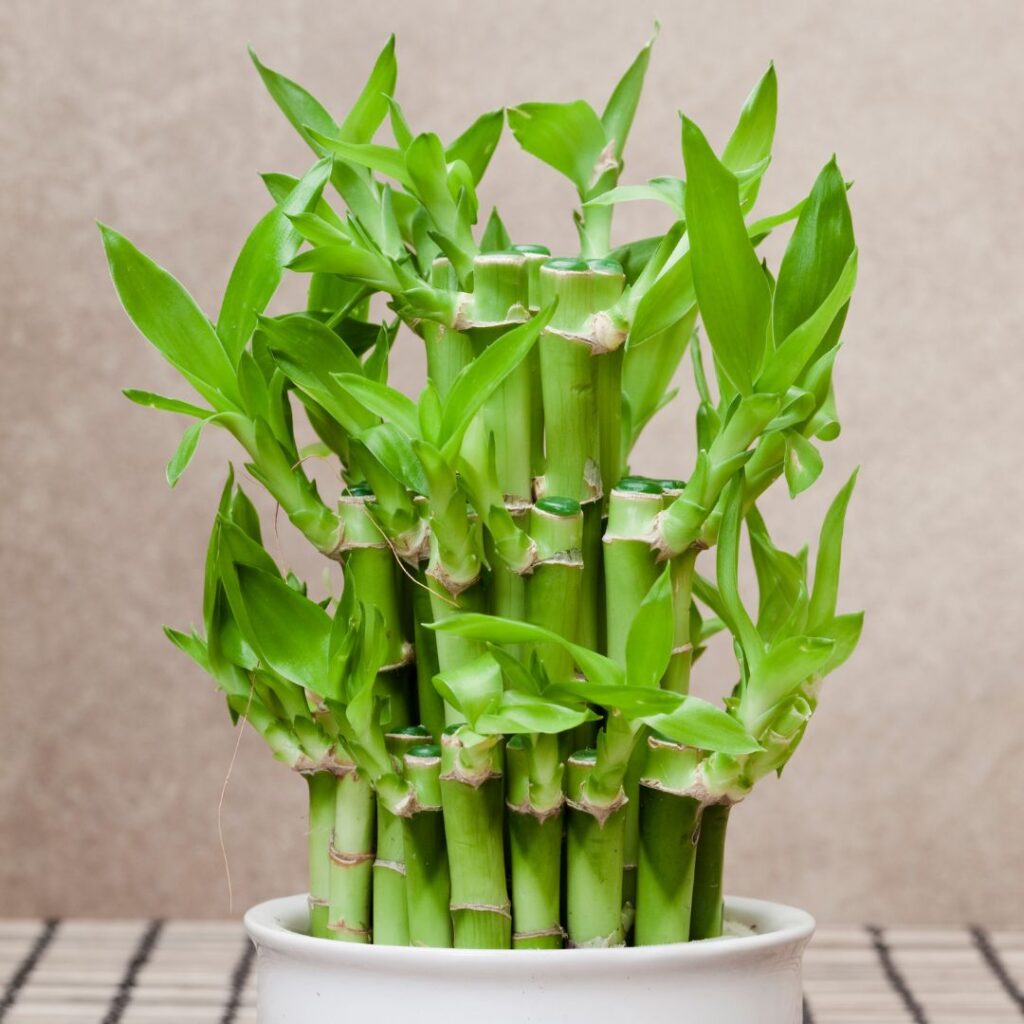
If you’re looking for a low-maintenance houseplant, Lucky Bamboo is the way to go! This type of bamboo is known for its easy care requirements and attractive style. Plus, it’s perfect for those with little space. It doesn’t need much light and can thrive in almost any environment. As long as you remember to water your Lucky Bamboo regularly, it will be happy indoors.
Be sure to use potting soil that drains well when re-potting, and avoid over-watering as this can cause root rot. Every once in a while, give your plant some fertilizer but make sure not to overdo it! You can propagate Lucky Bamboo by dividing existing stalks or rooting cuttings in water or planting medium—it’s really quite simple.
Related Post:
8 Plants That Look Like Bamboo But Are Not
Arrow Bamboo
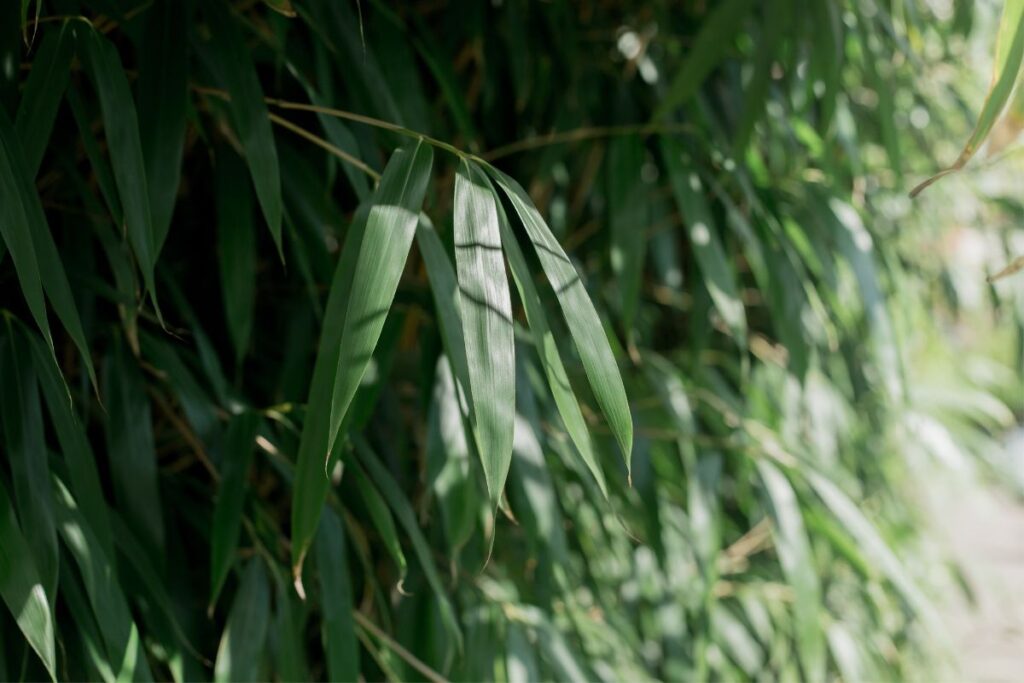
You’ll love adding a touch of the exotic to your space with Arrow Bamboo! Quick to grow and easy to care for, this lush plant will fill up any room in no time. For those interested in container gardening, Arrow Bamboo is perfect because it doesn’t require much watering—just enough to keep the soil moist.
When choosing a planting pot, make sure it has plenty of drainage holes so that excess water can escape. Additionally, humidity levels and light requirements are also important factors when growing Arrow Bamboo indoors. A humid environment and medium-to-bright indirect light will help the plant thrive and reach its full potential.
Black Bamboo

Enjoy the unique look of Black Bamboo in your space—it’s sure to make a statement! Phyllostachys nigra, more commonly known as Black Bamboo, is an excellent plant for decorative purposes. Its striking black culms and lush green foliage create an eye-catching contrast that can be appreciated indoors. To ensure your Black Bamboo stays looking its best, you’ll need to have a good understanding of its care requirements.
Depending on the placement of your bamboo, you may need to move it around periodically so that it gets enough light exposure. You should also consider what type of container options are best suited for the space you plan to place your Black Bamboo in.
Golden Bamboo
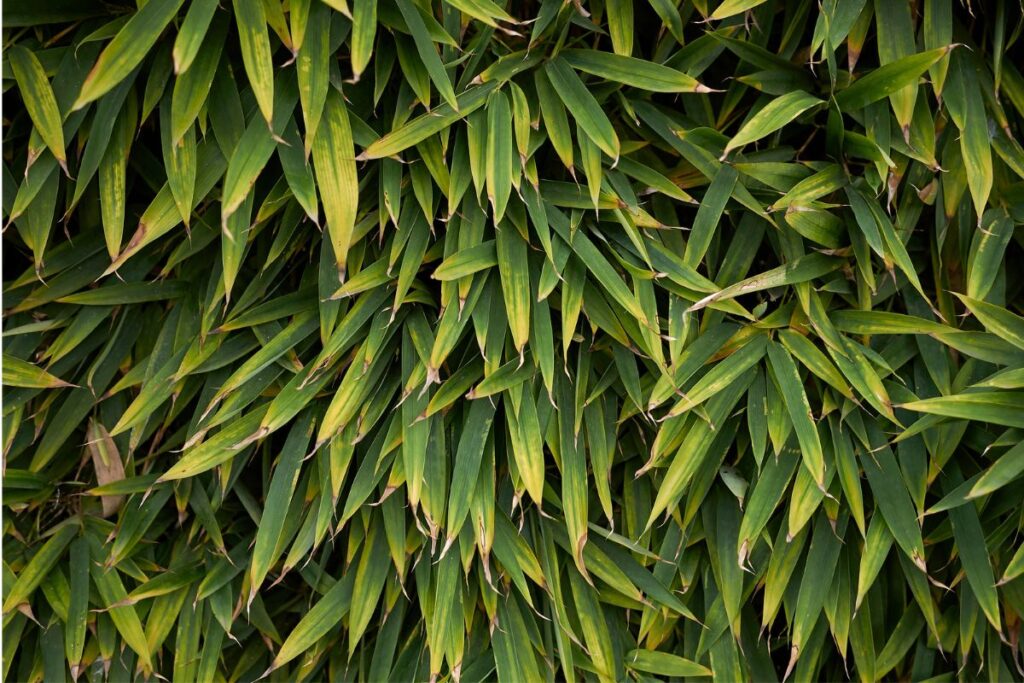
Moving on from Black Bamboo, let’s explore Golden Bamboo. You may be wondering what makes this one so special compared to other types of bamboo plants. As its name implies, Golden Bamboo has a yellow-golden hue to it that stands out in any indoor environment. It is relatively easy to care for and maintain compared to other varieties, with only minimal watering requirements and light levels needed for the plant to thrive.
When potting your Golden Bamboo, make sure you use well-draining soil and avoid overfilling the pot as root rot can easily occur if left unchecked. Pruning techniques are also important when caring for this type of bamboo, as pruning will help ensure it stays healthy and grows in a beautiful shape.
Japanese Cane Bamboo
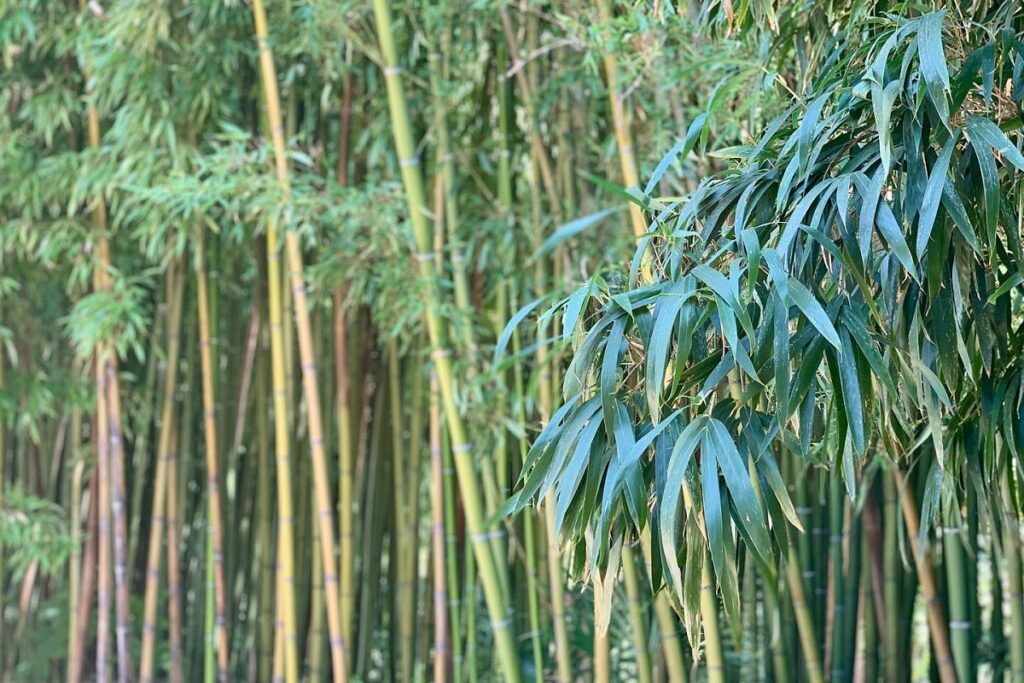
Adorning your home with Japanese Cane Bamboo can bring a unique touch of elegance that you won’t find with other varieties. This type of bamboo is often propagated through division, meaning it’s easy to keep growing in your own space. While Japanese Cane Bamboo grows best in USDA hardiness zones 8-11, it can also be grown indoors when given the right conditions and proper care.
To get started, make sure the potting soil is well-draining and rich in nutrients for optimal growth. Additionally, fertilizing your Japanese Cane Bamboo every couple of months will help ensure that it receives the nutrition it needs to flourish. When it comes to maintenance, simply prune away dead leaves or any shoots that may be growing too close together. Finally, don’t forget to water your Japanese Cane Bamboo regularly to keep your bamboo looking its best!
Malay Dwarf Bamboo

If you’re looking for a unique way to bring nature into your home, the Malay Dwarf Bamboo could be the perfect option! Malay Dwarf Bamboo is an ideal choice for container growing because of its low maintenance needs and compact size. It requires minimal care and doesn’t take up a lot of space in your home. When caring for Malay Dwarf Bamboo, it’s important to consider its soil requirements, light levels, and pruning techniques so that it remains healthy and grows properly.
When selecting a potting mix for your Malay Dwarf Bamboo, make sure to choose one that is rich in organic matter with good drainage capabilities. In terms of light levels, this type of bamboo does best when exposed to bright indirect sunlight or partial shade. Pruning should be done regularly as well; trimming the shoots close to the ground will help promote new growth while also keeping the plant at a manageable height.
Buddha Bamboo
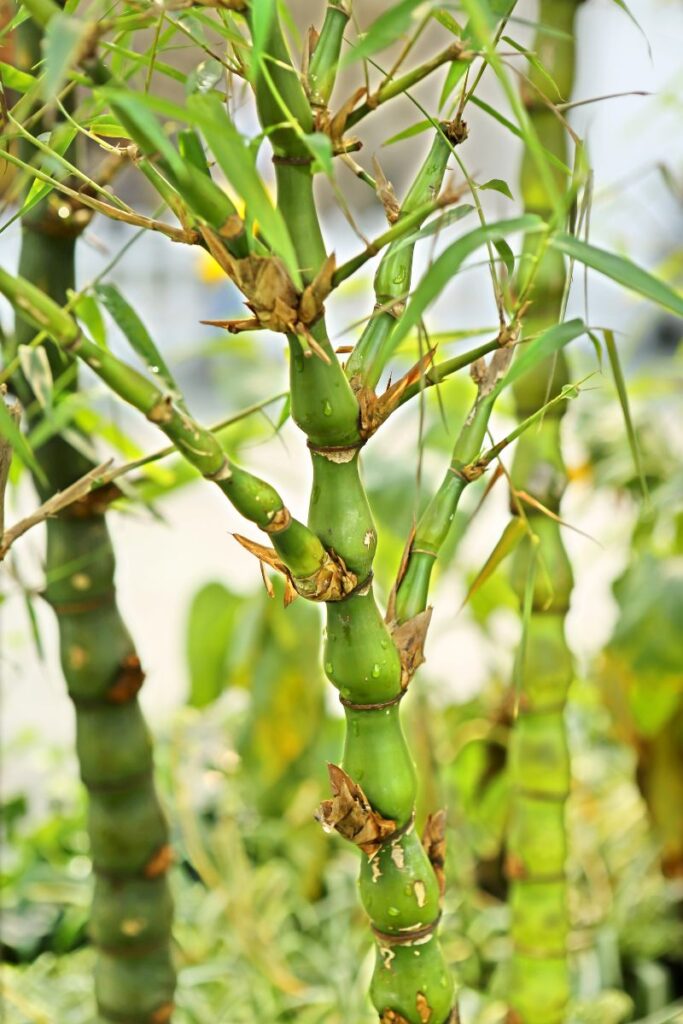
Bringing a hint of ancient culture into your home, Buddha Bamboo is the perfect way to spark spiritual harmony and create an atmosphere of serenity. To ensure your indoor bamboo plant stays healthy and thriving, it’s important to follow some simple but effective watering tips, light requirements, soil choices, potting methods, and fertilizing advice.
When caring for your Buddha Bamboo indoors, keep its potting soil lightly moist with regular watering; always avoid overwatering since this can lead to root rot. Place the plant in an area that gets bright indirect light for best results; direct sunlight will scorch the leaves. Make sure you are using well-draining soil when potting and repotting your bamboo—a quality commercial potting mix or a blend of peat moss and sand works well. Fertilize your Buddha Bamboo only once per year in spring with an organic fertilizer to support strong growth throughout the growing season.
Umbrella Bamboo
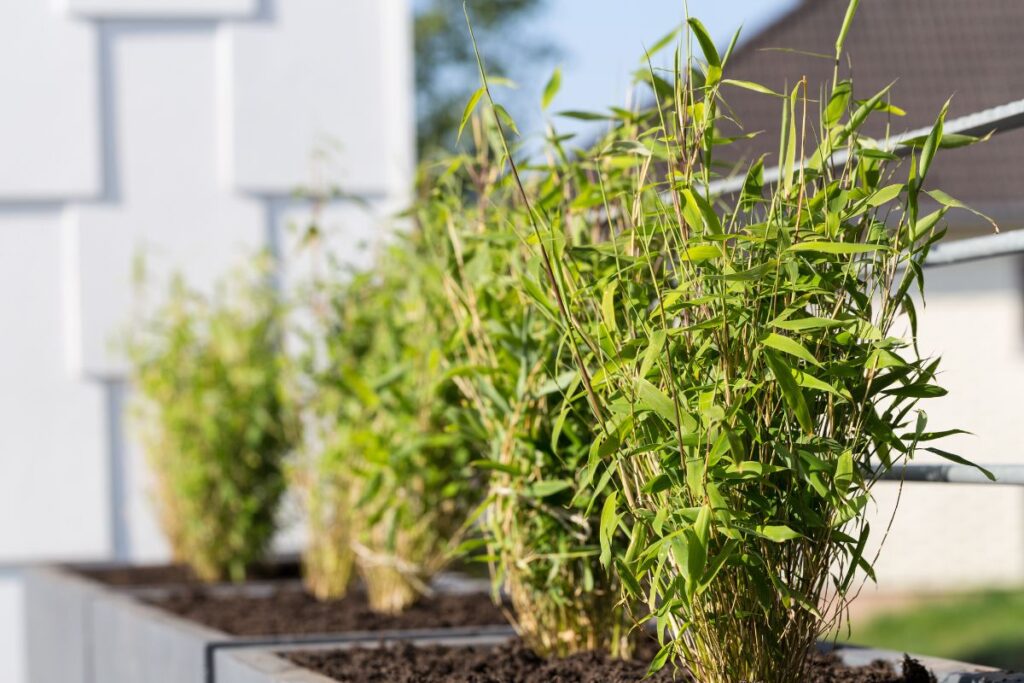
You can add a touch of exotic beauty to your home with Umbrella Bamboo—the perfect way to bring serenity and harmony. It thrives in many soil types, but well-draining potting soil is best for optimal growth. This type of bamboo plant requires lots of indirect light and moderate water needs; when the top layer of soil becomes dry, give it a nice drink. When planting Umbrella Bamboo, make sure you keep some space between each one as they can grow quite tall!
Hedge Bamboo
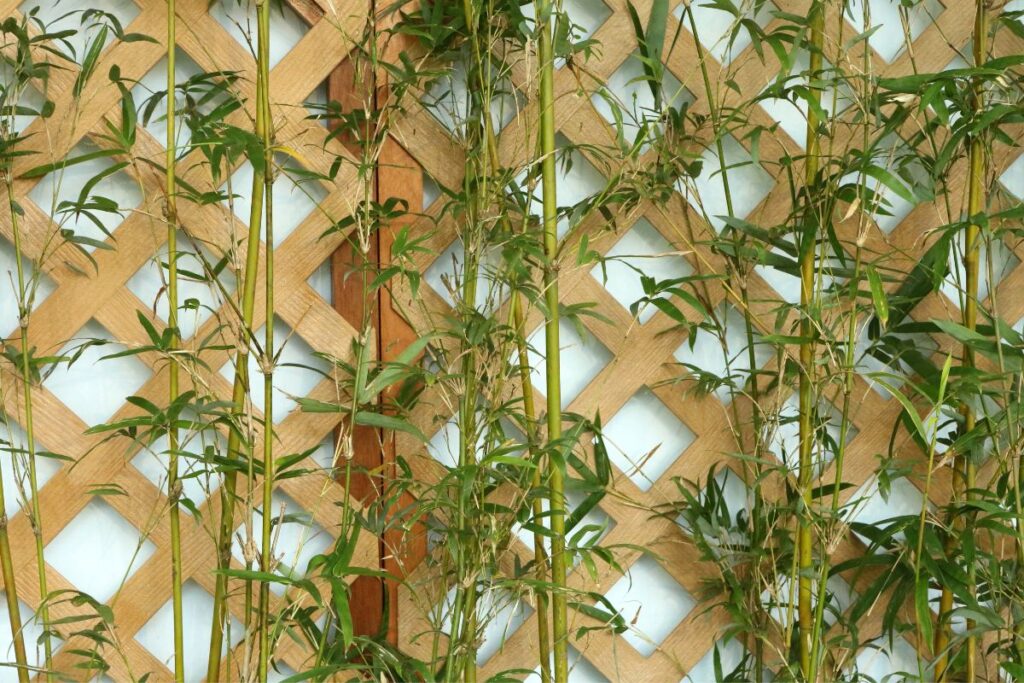
Create a tranquil atmosphere in your home with Hedge Bamboo—it’ll bring peace and serenity that’ll last for years! This type of bamboo is an ideal choice for creating privacy screens or hedges, as they grow to up to ten feet tall. When caring for Hedge Bamboo, make sure you understand the pruning techniques, light requirements, air circulation, and potting soil needed. To ensure optimal growth, fertilizing methods should also be taken into consideration.
If cared for properly, Hedge Bamboo will provide lush green foliage that will add beauty and privacy to any home or garden. With its dense growth habit and evergreen leaves, it’s perfect for establishing boundaries or hiding unsightly views. Plus, once established it can require little maintenance all year round! So why not create a tranquil space at home with this lovely plant?
Which Bamboo Is Best For Indoors?
Deciding which variety of this versatile grass is ideal for keeping indoors can be a challenge. When selecting the perfect bamboo to bring into your home, consider each plant’s watering needs, temperature control, humidity requirements, lighting requirements, and fertilizing needs. To ensure that your bamboo is healthy and content in its new home environment, look for varieties that require minimal maintenance—the less effort you need to put into caring for it the better!
When looking for an indoor bamboo plant, opt for species like Lucky Bamboo or Narihira Bamboo; they are both low-maintenance and easy to care for. Additionally, these plants prefer indirect sunlight as opposed to direct sun and thrive in temperatures between 65°F-85°F with high humidity levels. Both species are also very tolerant when it comes to water—only water them once a week or when the soil feels dry two inches below surface level. As far as fertilizing goes, only use fertilizer on these plants once every three months; using too much can burn their roots and leaves. With proper care, you’ll have a beautiful addition to your home with minimal effort required from you!
What Is The Easiest Bamboo To Grow Indoors?
With the right care and environment, you can easily grow a beautiful bamboo plant indoors! When considering which type of bamboo to choose for your home, it’s important to look at easy care needs, water requirements, soil choice, light levels, and temperature control. Depending on the species and variety of bamboo you choose, some may require more attention than others.
The easiest type of bamboo to grow indoors is the Black Bamboo. This variety requires minimal maintenance and can thrive in average room temperatures with plenty of indirect sunlight. It also requires minimal watering; usually only once or twice a week depending on the season. Furthermore, it prefers well-draining soil that is slightly acidic with good aeration. In addition, it doesn’t require extensive pruning as its growth rate is slow in comparison to other types of indoor bamboo. With proper care and attention, this lovely plant will bring beauty and life into your home for many years to come!
Conclusion
You can now grow bamboo indoors! You don’t have to worry about maintaining a large outdoor space or dealing with the mess that comes with it. With nine different types of indoor bamboo plants, you’re sure to find one that fits your needs and style. The best part is that many of these bamboo are easy to grow and maintain, making them great for both experienced and beginner gardeners alike. So why not bring some life into your home by growing some bamboo indoors today? It’s sure to be an enjoyable experience!
